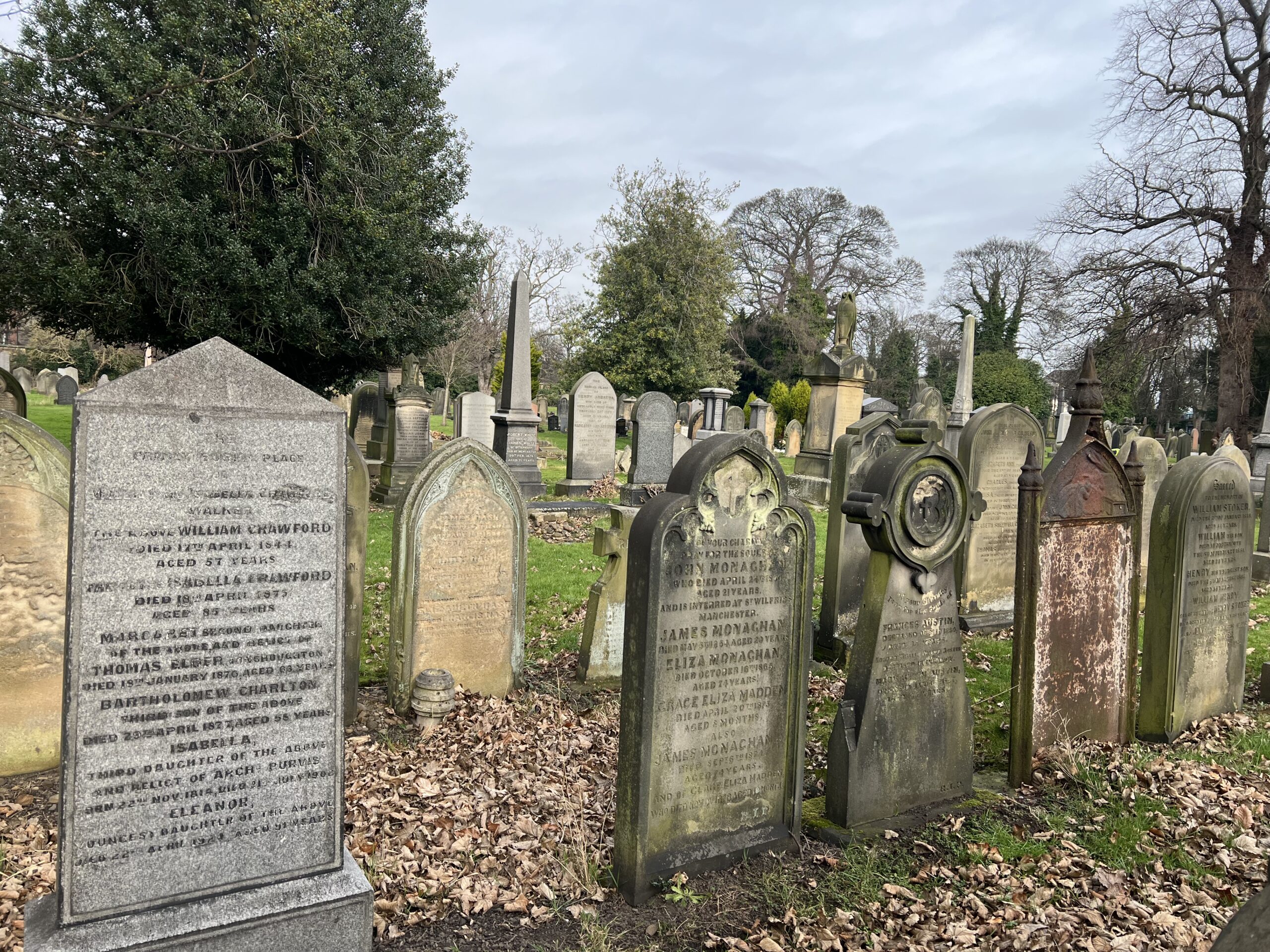By Pauline Martin
As you stroll around Jesmond Old Cemetery, there are always items of interest to focus on, whether it be a grave you haven’t noticed before, an unusual spelling of a name on a monument or, as in the case of this article, the amount (or lack of it, really) of ornamental iron work that remains either on or around the graves. Anecdotally, like most of the available iron in public spaces at the time, much of the ironwork was utilised during W.W. 2 for ‘recycling’ into the production of armaments – whether the iron was actually used for this purpose is open to conjecture. However, whilst much of the ironwork within Jesmond Old Cemetery is now long gone, there are a few plots that still have the complete railings surrounding them – how did they survive and others didn’t? Anyway, have a wander and see if you can spot them.




As you do so, look out for three particular ‘iron markers’ of note….
Originally situated next to the wall of Jesmond Road, in the Unconsecrated Section of the cemetery, there stood a painted iron plate recording the death of William Crawford. The ‘Records of Removal of Graves’ show that this was moved in 1971 in preparation for the widening of Jesmond Road which, fortunately, never happened. William was an iron founder at Walker Iron Works. Born in 1786 in Longbenton, he married Isabella Reeditt in 1808 and they subsequently had six daughters and seven sons. In the 1841 Census, he is aged 54, described as an Iron Founder and is recorded as living in Vulcan Street with his wife and nine of his children. William died on the 17th April 1844, aged 57 years. His death notice says “He was much respected. He held a responsible situation for several years in the Walker Iron Works, which he filled with great credit to himself and perfect satisfaction to his employers.”


The Executor of William’s will was Isaac Lowthian Bell, a Victorian ironmaster and Liberal Party politician. William’s death is recorded on a nearby stone along with his wife, Isabella Crawford, who died on the 18th April 1875, aged 85 years, along with other members of the family.

Nearby stands another iron grave marker; a cross on top of a stone memorial. The iron cross has the inscription ‘Mary Leighton July 21 1865 40 years’, whilst the stone memorial below bears the names of three of her daughters, ‘Mary Ann Leighton Died August 20th 1875 aged 13 years, Emma Mary Leighton Died January 30th 1879 aged 13 years and Catherine Leighton Died February 1st 1881 aged 17 years’. The three youngest children born to Robert Leighton and Mary Wingate, they had five daughters and a son in total during their brief marriage. Robert was a colliery agent and was recorded as living in Gosforth Park, Killingworth in 1861 with their three older children.

In the Consecrated Section of Jesmond Old Cemetery stands an iron cross with the inscription on the stone bearing the name of William Cosens Way. William was born on 21st March 1833 in Torquay, Devon to Charles Way and Eliza Cosens Woolton. Charles was an artist well known for his local landscapes, painted in watercolour. William too was an artist that favoured watercolour but also painted in oils. He studied under his father, then at South Kensington for six years to obtain a Masters in Teaching. He was Director of Newcastle Upon Tyne School of Art for 40 years, along with the artist William Scott Bell. He married Sarah Ann Smith in 1866 and they had one daughter. He is recorded in the 1901 Census as living in Whitley, an artist and sculptor. He died at St George’s Terrace Newcastle on the 13th March 1905 aged 72 years, and left over £2,000 to his wife. A portrait of him, painted by Alphonse Legros, is in the Hatton Gallery.

In addition to the above, there is evidence of two further iron crosses that may have been similar to that of Mary Leighton’s monument – in the Consecrated Section of Jesmond Old Cemetery there are three graves, all in a row, with Scandinavian names on them, with the outer two displaying the remains of where full iron crosses would have stood.


